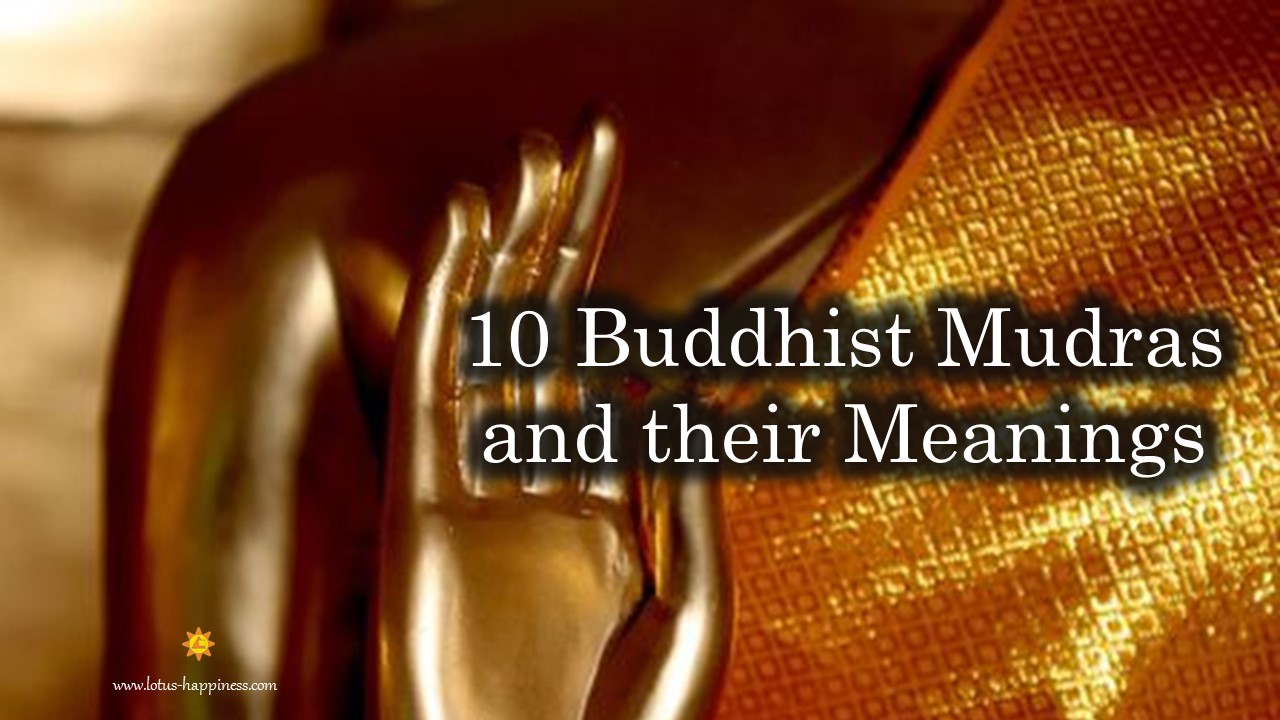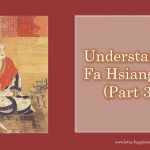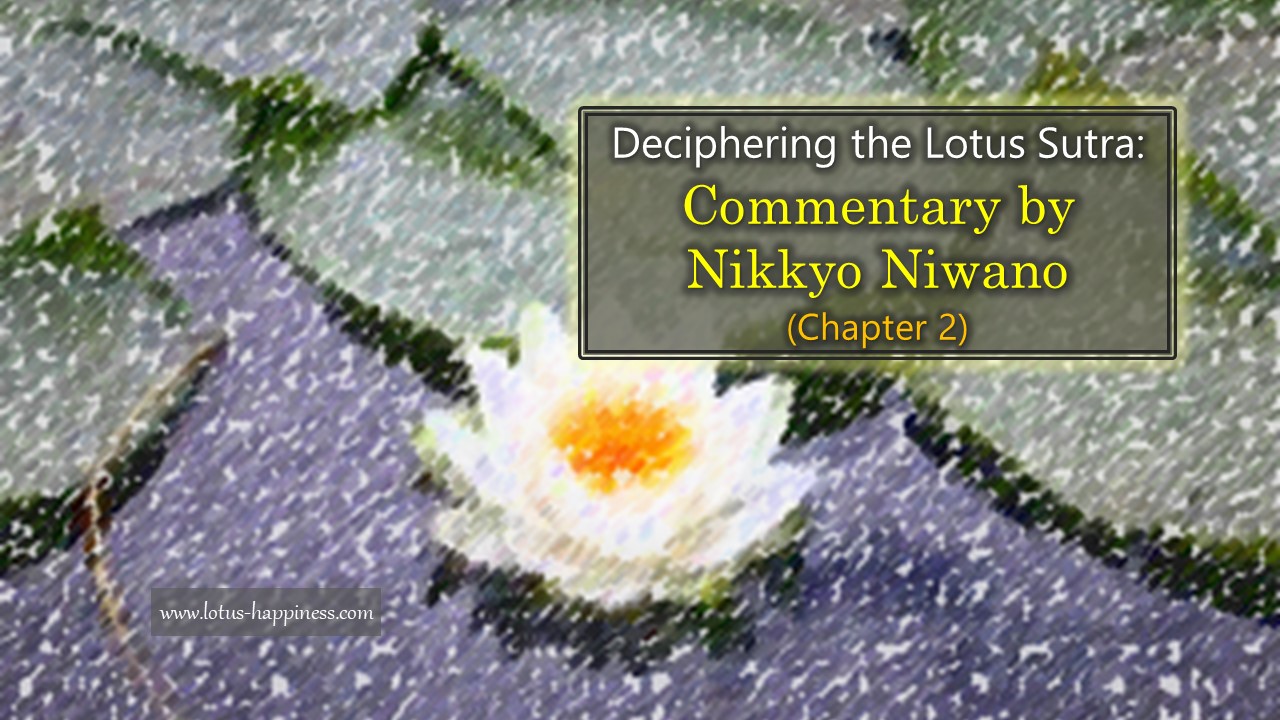10 Buddhist Mudras and Their Meanings
Mudra #1 – Bhumisparsha Mudra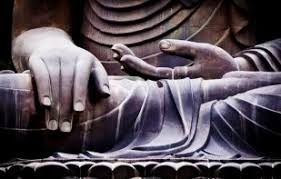
This is one of the most common Mudras found in statues of Buddha in many countries.
Meaning: ‘Touching the Earth.’
Hand position: Shown in the sitting meditation position only. In this Mudra the right hand points towards the Earth, hanging over the knee, palm inward. The left hand in this Mudra rests in the lap, palm upright.
Significance: It is also known as ‘Calling the Earth to Witness the Truth’ Mudra, and it represents the moment of Buddha’s attaining enlightenment.
Mudra #2 – Dhyana Mudra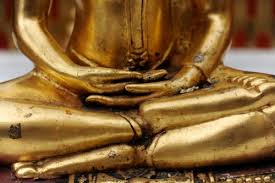
Meaning: Meditation. Also called ‘Samadhi’ or ‘Yoga’ Mudra.
Hand position: This gesture is also peculiar to the sitting position only. In this Mudra both the hands in the lap, with the back of the right hand resting on the palm of the left hand with fingers extended. In many statues the thumbs of both hands are shown touching at the tips, thus forming a mystic triangle.
Significance: This gesture has been used by yogis for meditation and concentration. It also signifies attainment of spiritual perfection. The Mudra was used by Buddha during the final meditation under the ‘bodhi tree.’
Mudra #3 – Abhaya Mudra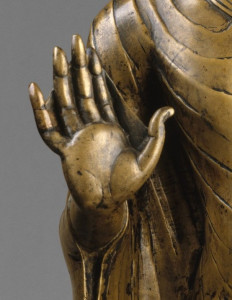
Meaning: Fearlessness.
Hand position: In this Mudra, the right hand is generally raised to shoulder height with arm bent. The palm of the right hand faces outwards and the fingers are upright and joined. The left hand hangs downwards by the side of the body.
Significance: This gesture was shown by Buddha immediately after attaining enlightenment. It symbolises strength and inner security. It is a gesture which instills a sense of fearlessness to others as well. In Japan this Mudra is shown with the middle finger slightly projected forward. In Thailand and Laos this Mudra is more common in the walking Buddha.
Mudra #4 – Dharmachakra Mudra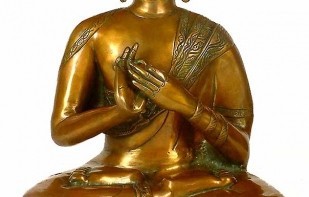
Meaning: ‘Turning the Wheel of the Dharma or Law.’
Hand position: This Mudra involves both hands. The right hand is held at chest level with the palm facing outwards. A mystic circle is formed by joining the tips of the index finger and the thumb. The left hand is turned inward and the index finger and thumb of this hand join to touch the right hand’s circle.
Significance: This gesture was exhibited by Lord Buddha while he preached the first sermon to a companion after his enlightenment in the Deer Park of Sarnath. It signifies setting into motion the wheel of Dharma. Since the fingers are positioned near the heart in this Mudra, the preaching is coming straight from the heart of Buddha.
It is also spelled ‘Dharmacakra Mudra.’
Mudra #5 – Vitarka Mudra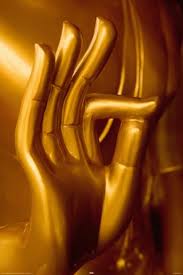
Meaning: Teaching and discussion or intellectual debate.
Hand position: The tips of the thumb and index finger touch each other, forming a circle. The right hand is positioned at shoulder level as in Abhaya Mudra and the left hand may be at the hip level, in the lap, with palm facing upwards.
Significance: It symbolizes the teaching phase of preaching in Buddhism. The circle formed by the thumb and index finger maintains the constant flow of energy, as there is no beginning or end, only perfection.
Mudra #6 – Namaskara or Anjali Mudra 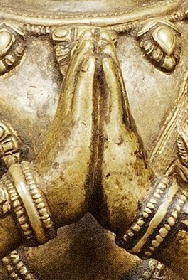
Meaning: Greetings, devotion, and adoration.
Hand position: Both hands close to the chest, palms and fingers joined against each other vertically.
Significance: It is common gesture used in India to greet people (Namaste) and also in some Southeast Asian countries. It signifies adoration of the superior and considered a sign of regard with deep respect if done at face level.
It is believed that true Buddhas (those who are enlightened) do not make this hand gesture and this gesture should not be shown in Buddha statues. This is for Bodhisattvas (who aim and prepare to attain perfect knowledge).
Mudra #7 – Vajra Mudra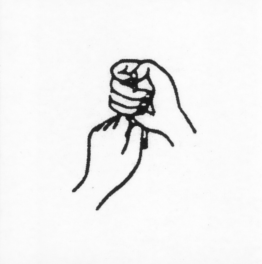
Meaning: Knowledge.
Hand position: This mudra is not well known in India and is better known in Korea and Japan. In this Mudra the erect forefinger of the left hand is held in the fist of the right hand. It is seen in the mirror-inverted form also.
Significance: This Mudra signifies the importance of knowledge or supreme wisdom. Knowledge is represented by the forefinger and the fist of the right hand protects it.
Mudra #8 – Uttarabodhi Mudra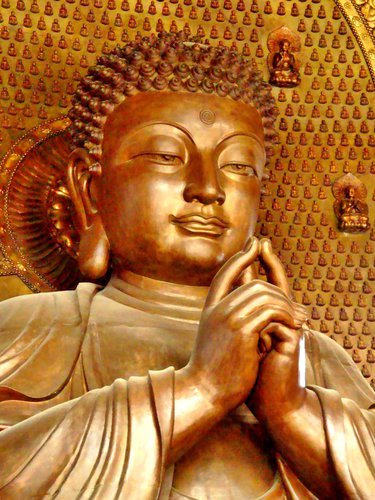
Meaning: Supreme enlightenment.
Hand position: Holding both hands at the level of the chest, intertwining all the fingers except index fingers, extending index fingers straight up and touching each other.
Significance: This Mudra is known for charging one with energy. It symbolises perfection. Shakyamuni Buddha, the liberator of Nagas, presents this Mudra.
Mudra #9 – Varada Mudra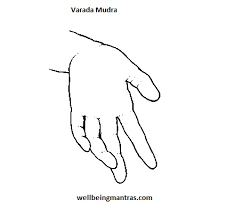
Meaning: Charity, compassion or granting wishes.
Hand position: The right arm is extended in a natural position all the way down, with the palm of the open hand facing outwards towards onlookers. If standing, the arm is held slightly extended to the front. Can be a left-hand gesture as well.
Significance: This Mudra signifies five perfections: Generosity, Morality, Patience, Effort and Meditative Concentration, through the five extended fingers. Normally, this Mudra is found in combination with other Mudras like Abhaya, specially In the standing position.
Mudra #10 – Karana Mudra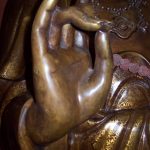
Meaning: Banishing or warding off evil.
Hand position: In this Mudra hand is stretched out, either horizontally or vertically, with the palm forward. The thumb presses the folded two middle fingers but the index and little fingers are raised straight upwards. May be combined with Abhaya Mudra in the left hand.
Significance: This Mudra signifies expelling demons and negative energy. The energy created by this Mudra helps remove obstacles such as sickness or negative thoughts.
Source: Owlcation

